Director – Akira Kurosawa – 1985 – Japan – Cert. 15 – 162m
*****
This spectacular samurai period epic is currently streaming on BFI Player as part of the Japan programme alongside 21 other Kurosawa films together with a much wider selection of Japanese movies.
The following review originally appeared in Funimation UK. It was published to coincide with the film’s 2016 restoration. Stray Dog, Rashomon, Yojimbo, I Live In Fear, The Hidden Fortress, Throne Of Blood, The Lower Depths and High And Low, all of which are in the current season’s 22, also get a mention. As does Kagemusha which, curiously, isn’t.
—
Jeremy Clarke on Akira Kurosawa’s live action epic.
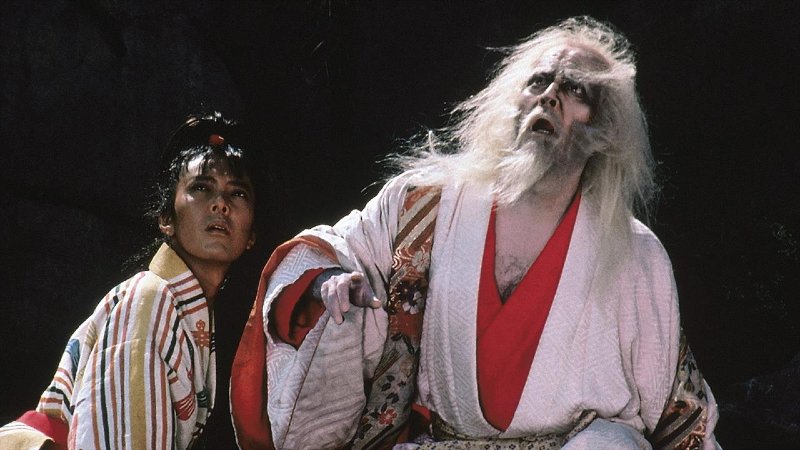
Ran is Akira Kurosawa’s remarkable 1985 free adaptation of King Lear, rereleased in cinemas worldwide in 2016 on the back of the 400th anniversary of William Shakespeare’s death.
More than any other Japanese film director, Akira Kurosawa (1910-1998) is responsible for bringing that country’s movies to the attention of international audiences. His first big exposure abroad came with the jidaigeki or period drama Rashomon (1950) which dramatised the story of a rape victim from different, successive character viewpoints. Entered in the 1951 Venice Film Festival without his knowledge, Rashomon unexpectedly picked up the prestigious Golden Lion award.
Subsequent international successes included Seven Samurai (1954) and Yojimbo (The Bodyguard) (1961). By the nineteen eighties, his productions had grown less frequent and more lavish with Kagemusha (The Shadow Warrior) (1980) and Ran (1985) requiring budgetary input from outside Japan.
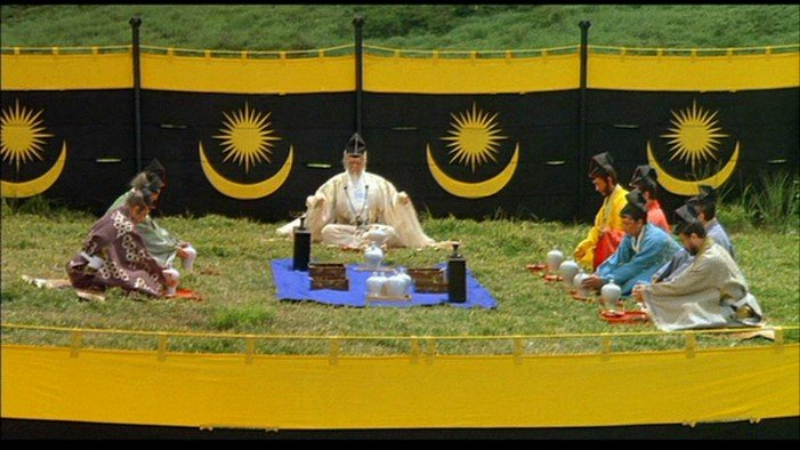
Kurosawa’s influence abroad has been consolidated by various remakes of his films, with other countries adapting the Japanese elements to their own cultures. Many of his biggest international successes being period pieces have leant themselves to obvious translation into Westerns where gun-slinging cowboys were easily substituted for sword-wielding samurai.
Thus, Hollywood remade Seven Samurai as The Magnificent Seven (1960) while Italy turned Yojimbo into A Fistful Of Dollars (1964) to launch the Spaghetti Western cycle. Yojimbo has proved an enduring property over the years. It subsequently inspired both the sword and sorcery epic The Warrior And The Sorceress (1984) and the gangster movie Last Man Standing (1996). Meanwhile, Kurosawa’s domestic box office hit The Hidden Fortress (1958) provided the template for George Lucas’ Star Wars (1977).
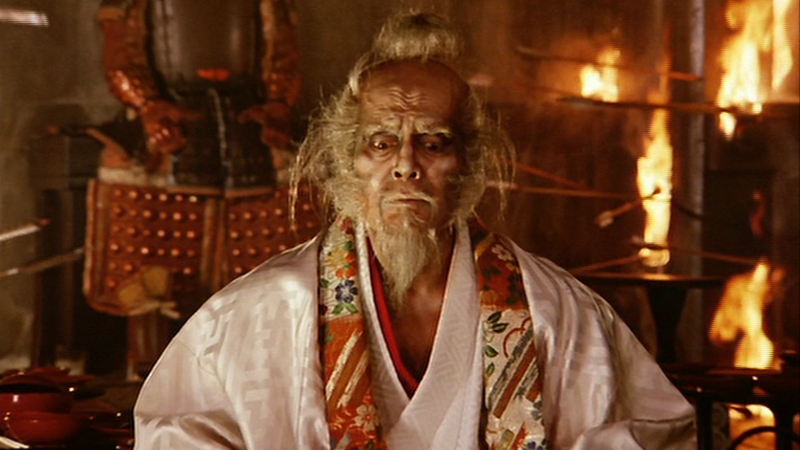
Alongside this process, Kurosawa has often been inspired by international writers when looking for script material. He sourced the Russian social realist Maxim Gorky for The Lower Depths (1957), contemporary American crime writer Ed McBain for High And Low (1963) and Shakespeare for not only Ran but also Macbeth adaptation Throne Of Blood (1957). As the breadth of these sources suggests, he didn’t confine himself to the jidaigeki genre alone. His filmography also includes crime films like Stray Dog (1949) and contemporary dramas like I Live In Fear (1955).
Ran was the second of two hugely expensive, late Kurosawa productions. Rising Hollywood name directors George Lucas and Francis Ford Coppola had persuaded 20th Century Fox to put up part of Kagemusha’s budget. For the equally epic Ran, Kurosawa collaborated with veteran French producer Serge Silberman who had previously worked with such noted directors as Jean-Pierre Melville and Luis Buñuel.
Kurosawa’s adaptation of King Lear shares the play’s basic setup. An ageing King wishes to retire dividing his kingdom between his three daughters. The first two accept, but the third and favourite daughter tells him the plan is ill-conceived and is cut out of her inheritance for her pains. Kurosawa switches the setting to sixteenth century Japan, turns the King into the old warlord Hidetora (Tatsuya Nakadai) and changes the three daughters into three sons Taro (Akira Terao), Jiro (Jinpachi Nezu) and Saburo (Daisuke Ryu). Yet he remains faithful to what ultimately happens to Shakespeare’s equivalent characters.
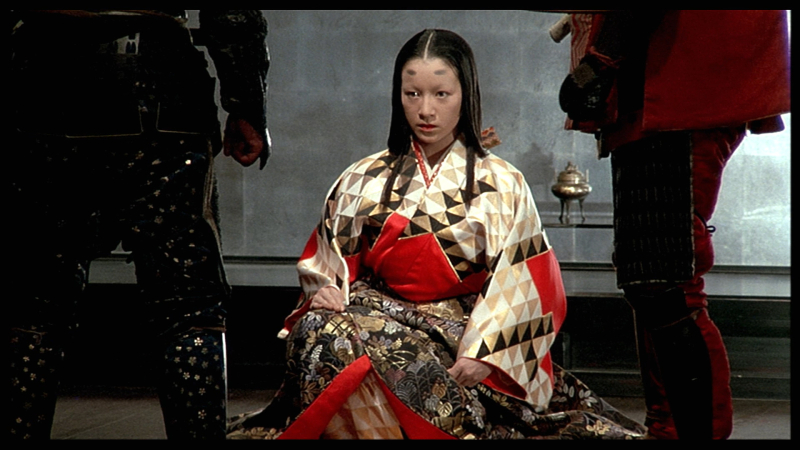
Kurosawa adds new characters. He gives the first son Taro the deeply manipulative wife Lady Kaede (Mieko Harada). In the course of the story we learn that her entire family was wiped out by the old warlord and she intends to avenge them. When Taro disappears from the plot, she seduces Jiro then forces him to marry her and have his own wife killed. Kaede has been compared to Lady Macbeth and is a very effective character, but she’s not in Lear.
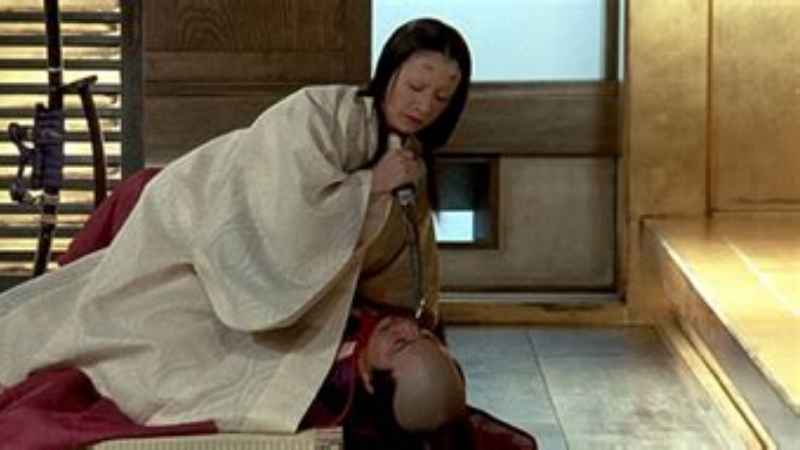
Jiro’s wife Lady Sué (Yoshiko Miyazaki) is another captive bride whose family has been similarly treated, but in contrast has forgiven her conquerors. Sué’s younger brother Tsurumaru (Takeshi Nomura) turns up later, blinded as a child by Lord Hidetora when their family was conquered. Tsurumaru provides an iconic closing image, standing alone with his stick atop some battlements like a demented, wandering victim abandoned to a cruel fate.
Kurosawa’s considerable skill as a director is very much in evidence in his scenario, mounting and shooting of scenes and editing together his sounds and images. Hidetora’s proposal is for the first son to rule the Kingdom from First Castle, where Hidetora and his entourage are to stay initially. The second son gets Second Castle and the third gets Third Castle. Hidetora plans to visit the other two sons in their castle in turn.
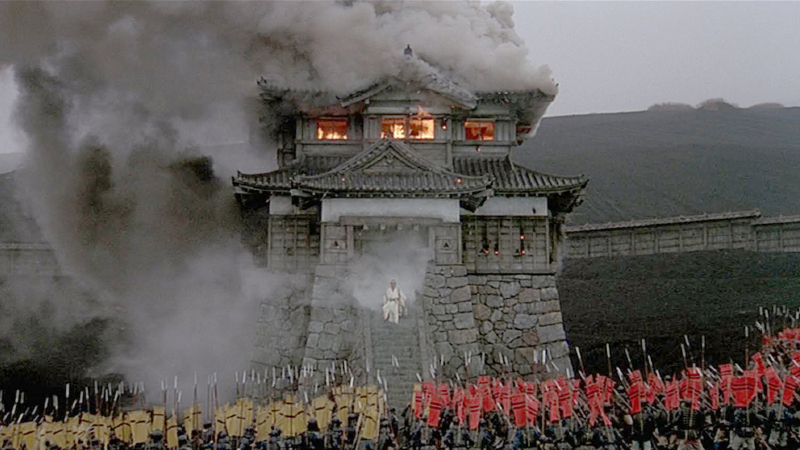
The simplicity of this idea is reflected in the costume design’s use of colour. The opening sequences clearly delineate the three brothers with the different primary colours yellow, red and blue. This schema is carried through the production. Not only do they wear these same colours consistently throughout, so too do their armies. So when a big battle scene occurs with red and yellow armies attacking a castle, you know exactly what’s happening.
His directing technique moves effortlessly between small, dramatic scenes involving small numbers of characters and epic battle scenes involving hundreds of costumed extras. Kurosawa seems equally at home with both. There’s an almost electric charge to some of the more intimate scenes and a real sense of craftsmanship and choreography in the big battle sequences. In fitting it all together, he’s perfectly happy to show part of a battle with no sound but music and part with full sound effects, contrasting the surreality of war in the first instance with the immediacy of battle in the second.
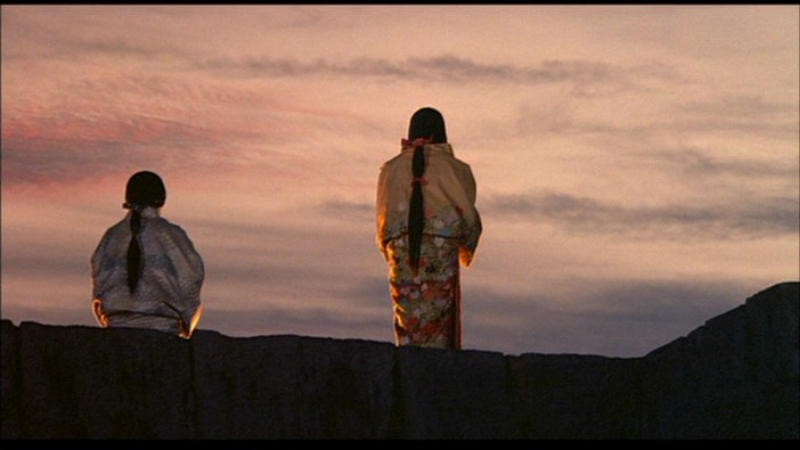
The restoration of Ran employed a 4K digital scan from the original negative and looks fantastic. Its UK release on 1st April coincides with a Shakespeare On Film season mounted at London’s BFI Southbank throughout April and May 2016, a programme touring the UK and a British Council sponsored international tour of 18 British Shakespeare films to 110 countries. In addition to Ran, the BFI Southbank season also includes Throne Of Blood.
Ran is currently streaming on BFI Player as part of the Japan programme alongside 21 other Kurosawa films together with a much wider selection of Japanese movies.
The above review originally appeared in Funimation UK to coincide with the film’s 2016 restoration.
Trailer:
